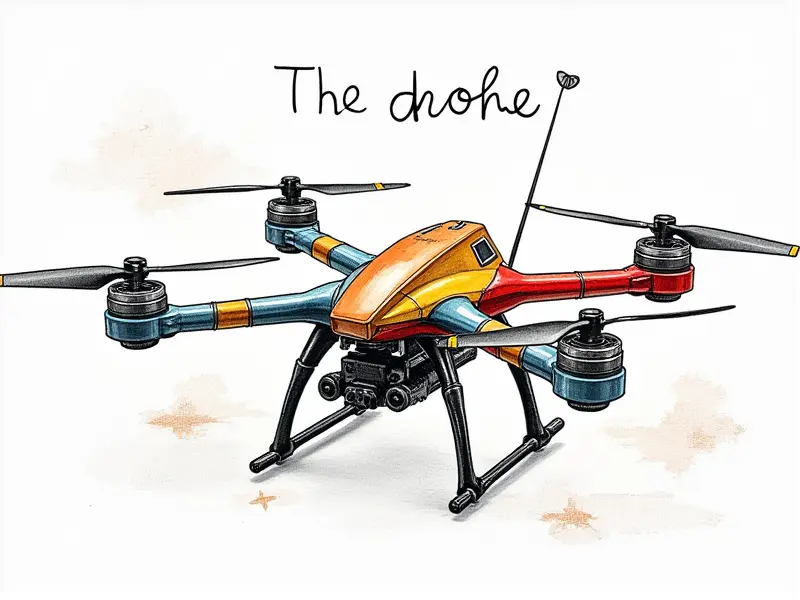How do RC quads work?

How Do RC Quadcopters Really Work?
RC quadcopters, also known as multirotor drones, have become increasingly popular among hobbyists and professionals alike. Their versatile design allows them to perform a wide range of tasks, from aerial photography to surveying large areas. Understanding how these devices work is crucial for anyone interested in operating or building their own RC quadcopter.
Inside the Mechanics of RC Quads
The mechanics behind an RC quadcopter are fascinating and intricate. At its core, a quadcopter consists of four identical arms extending from a central hub. Each arm supports a motor and propeller assembly that generates lift and thrust. The motors are typically brushless DC motors due to their efficiency and durability.
The frame of the RC quad is designed for stability and balance. Materials like carbon fiber, aluminum, and plastic are commonly used because they offer lightweight yet robust construction.
Secrets of RC Quadcopter Flight Dynamics
Flight dynamics in an RC quadcopter involve complex interactions between lift forces, thrust, and control inputs from the remote. The four motors provide both vertical lift and horizontal movement by tilting their propellers at different angles.
- Lift: Each motor spins a pair of propellers (one clockwise and one counterclockwise) to create upward lift. By adjusting the speed of each motor, the quadcopter can ascend or descend.
- Yaw Control: To rotate about its vertical axis, the speeds of opposite motors are adjusted differently. For instance, increasing the speed on two diagonal motors while decreasing it on the other two will cause a yaw motion to the right.
- Pitch and Roll: Tilting the front or back propellers faster than those at the sides allows for forward or backward movement (pitch), and tilting side-to-side propellers differently causes lateral movement (roll).
Understanding RC Quadcopter Technology
The technology behind an RC quadcopter includes sophisticated electronic components such as a flight controller, GPS module, battery management system, and remote control receiver. These elements work together to ensure precise navigation and stable flight.
- Flight Controller: This brain of the drone processes sensor data from gyroscopes, accelerometers, magnetometers, and barometric pressure sensors to calculate orientation and altitude. It then commands motor speed adjustments accordingly.
- Battery Management System (BMS): Ensures safe operation by monitoring battery voltage levels and preventing over-discharge or overheating.
- GPS Module: Provides location data to aid in autonomous flight modes like waypoint navigation.
- Remote Control Receiver: Interprets signals from the transmitter, allowing manual control of various functions such as throttle and gimbal movement.
Exploring the Technology in RC Quads
The technology used in modern RC quadcopters has advanced significantly over recent years. Features like obstacle avoidance sensors, high-resolution cameras, and automated flight modes have made these devices more accessible to users with varying skill levels.
- Obstacle Avoidance: Utilizing ultrasonic or infrared sensors, quads can detect obstacles in their path and adjust course accordingly. This is particularly useful for indoor flying.
- Vision Systems: Cameras equipped with image recognition software enable the drone to track objects of interest autonomously.
- Autonomous Flight Modes: Pre-programmed routes and waypoint navigation allow users to set up complex flight paths without constant manual control.
The Science Behind RC Quad Operation
Understanding the physics involved in quadcopter operation is key to optimizing performance. Newton’s laws of motion play a significant role here, as do principles of aerodynamics and stability theory.
- Newtons Laws: The fundamental principle that force equals mass times acceleration (F=ma) dictates how the drone responds to control inputs.
- Aerodynamic Forces: Lift generated by propeller rotation counteracts gravitational forces, allowing the quadcopter to maintain altitude. Thrust and drag also affect forward movement.
- Stability Theory: Proper balance between thrust vectors ensures stable flight characteristics, preventing unwanted rotations or oscillations.
RC Quadcopters: A Deep Dive into Mechanics
A deeper look at the mechanical aspects reveals how precise engineering contributes to reliable operation. Components like propellers and ESCs (Electronic Speed Controllers) must work seamlessly together for optimal performance.
- Propeller Design: Propeller blades are carefully engineered to maximize efficiency while minimizing noise and vibration.
- ESC Functionality: These devices control motor speed by varying electrical current, translating pilot inputs into controlled movements.
How Do RC Quadcopters Function?
The functional aspects of an RC quadcopter revolve around integrating hardware and software to achieve smooth operation. This includes everything from power distribution networks to sophisticated navigation algorithms.
- Power Distribution: Efficient routing of electrical signals ensures that all components receive the necessary voltage without compromising safety.
- Navigational Algorithms: Advanced software calculates optimal flight paths based on real-time data, enabling autonomous operation in diverse environments.
Inside RC Quads: The Mechanics Explained
The mechanics of an RC quadcopter encompass a broad spectrum of technical details. From the intricate assembly of motor and propeller units to the integration of high-tech sensors, every aspect plays a crucial role in achieving seamless flight.
- Motor Assembly: Precision manufacturing ensures that each motor operates at peak efficiency under varying load conditions.
- Sensor Integration: Seamless incorporation of GPS and inertial measurement units (IMUs) provides accurate position data for autonomous navigation.
Demystifying RC Quadcopter Operation
Making sense of how an RC quadcopter operates can seem daunting at first, but breaking it down into manageable components reveals its elegance and simplicity. By understanding the interplay between hardware and software, enthusiasts can better appreciate the marvels of modern drone technology.
Conclusion
RC quadcopters represent a fascinating blend of mechanical ingenuity and cutting-edge electronics. Their ability to perform complex maneuvers with ease has captured the imagination of hobbyists and professionals alike. Whether you’re flying for fun or conducting serious aerial surveys, mastering the intricacies of RC quad operation opens up endless possibilities.

